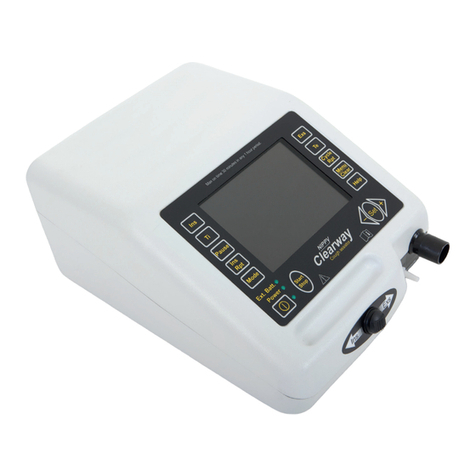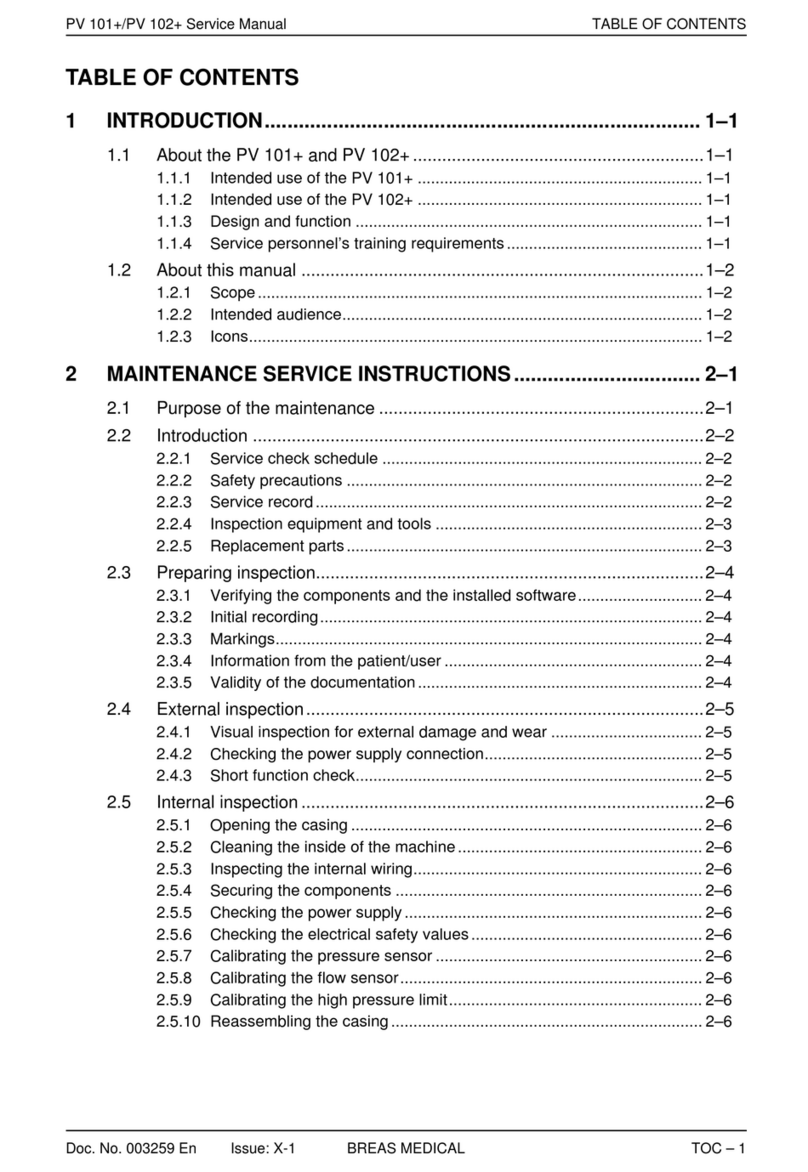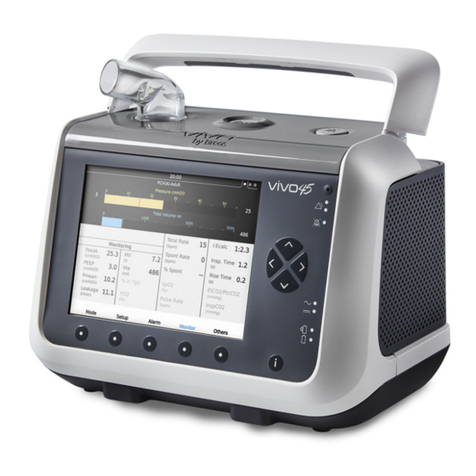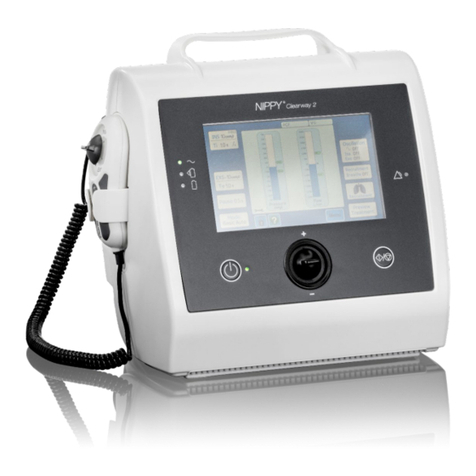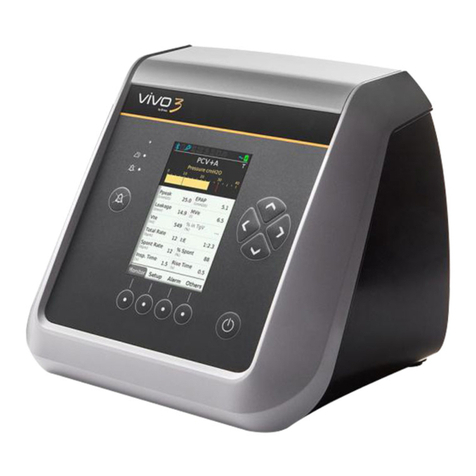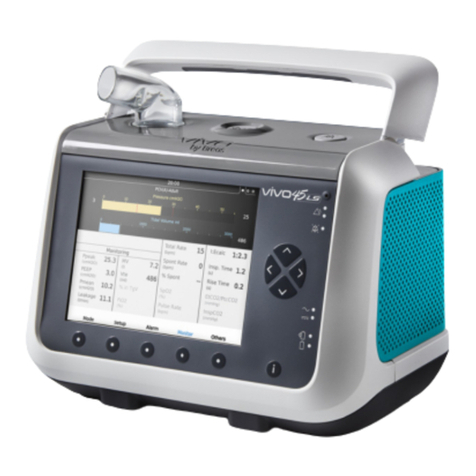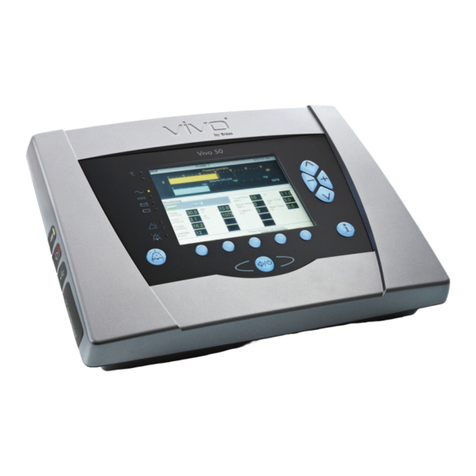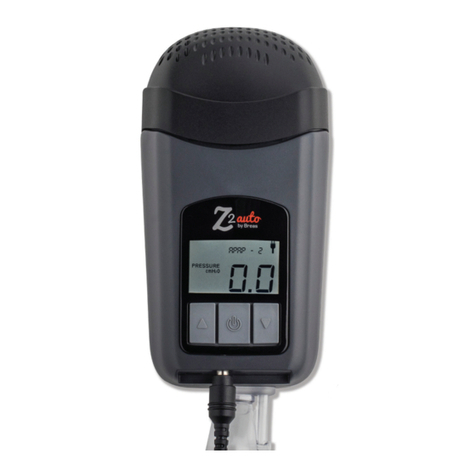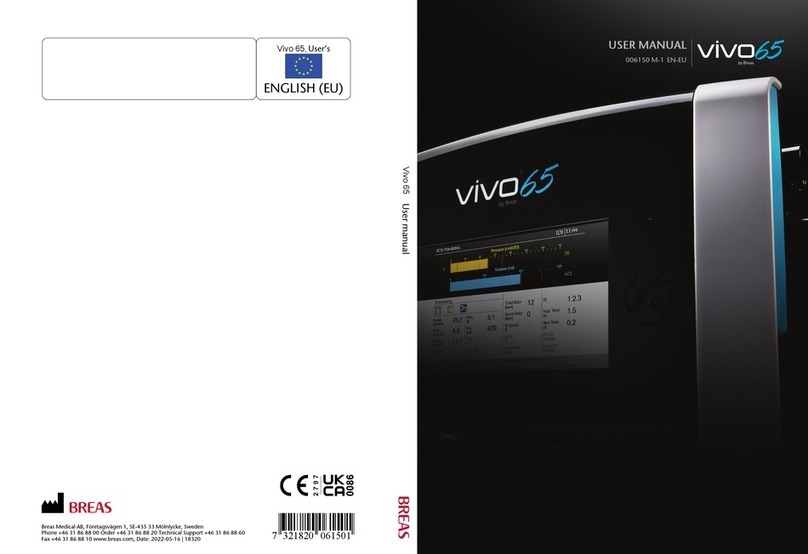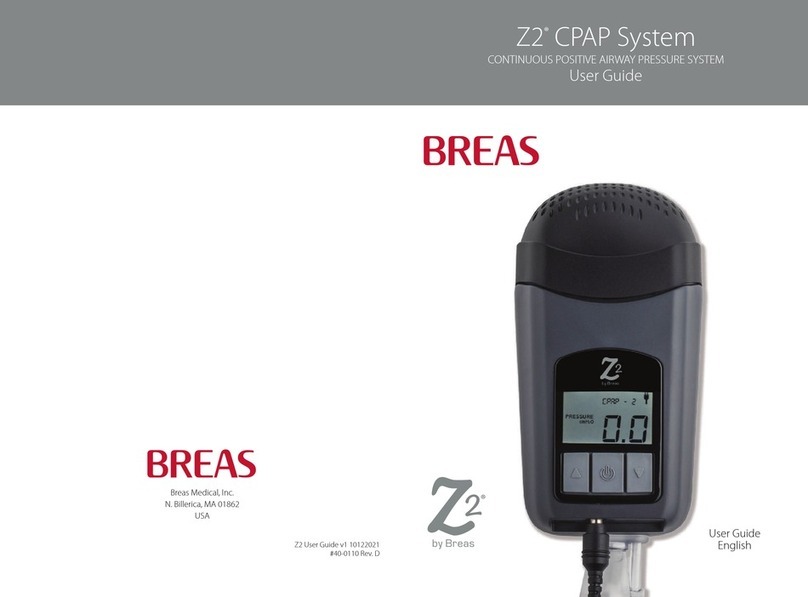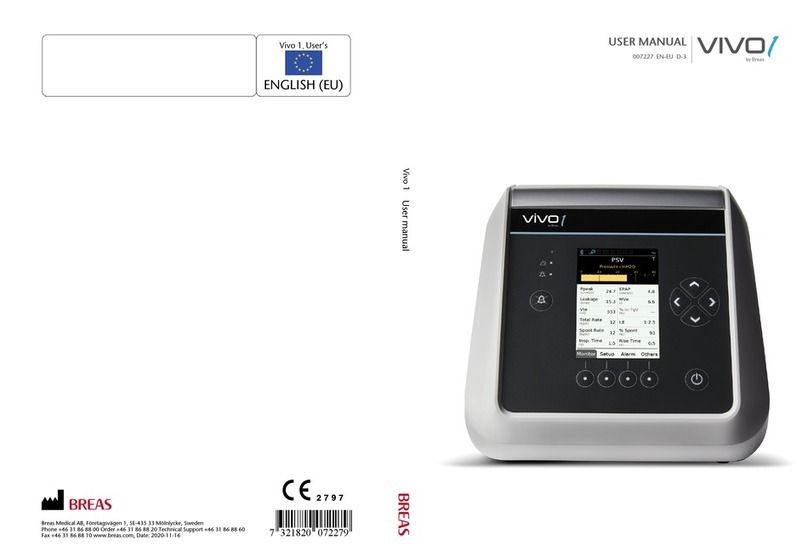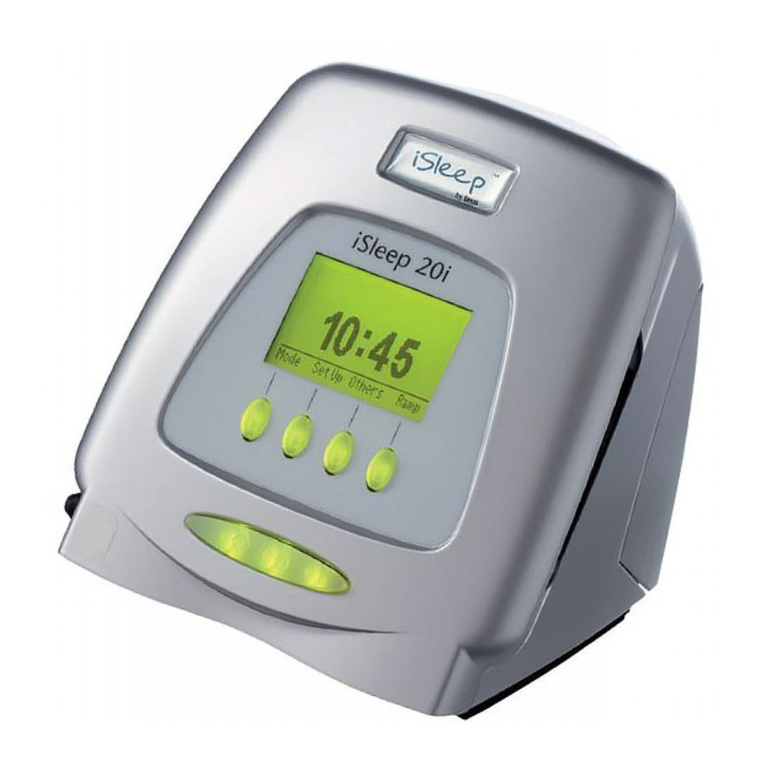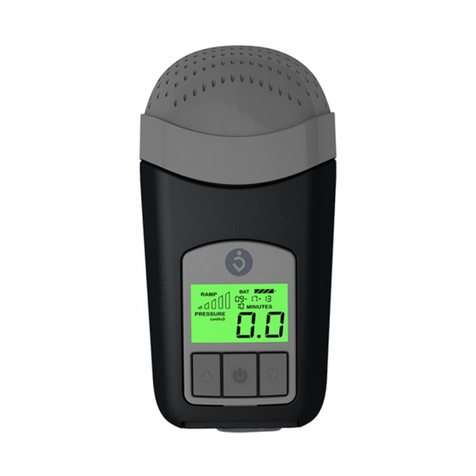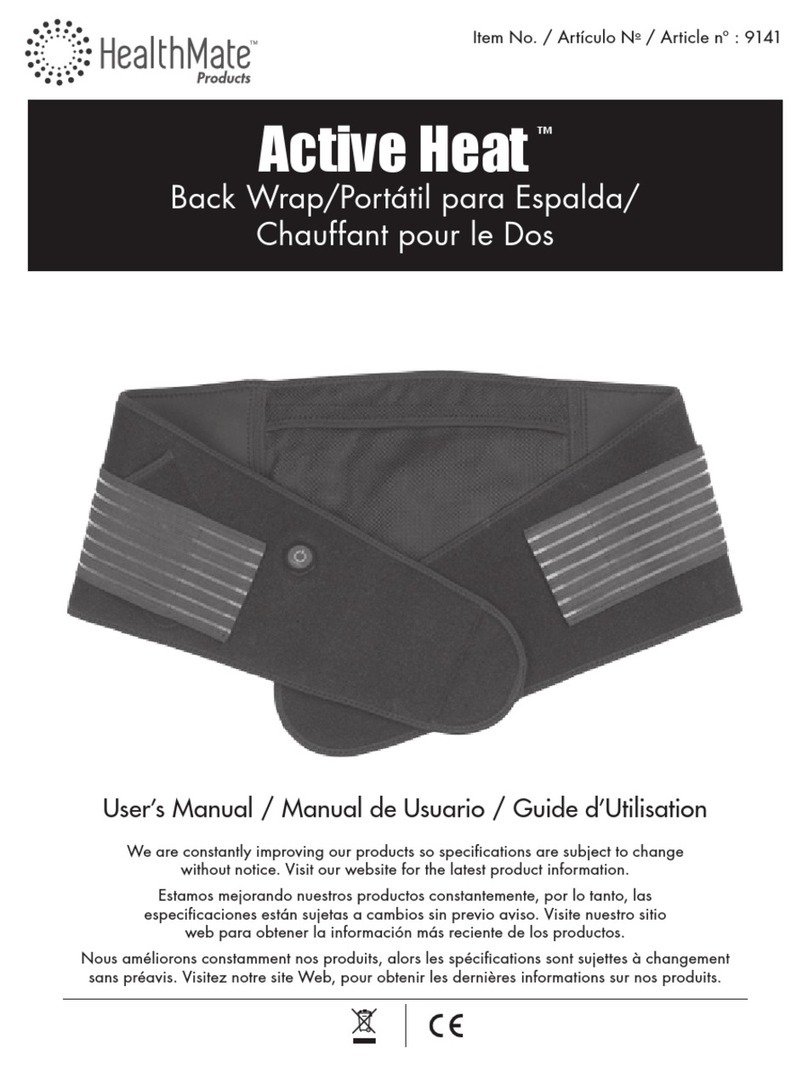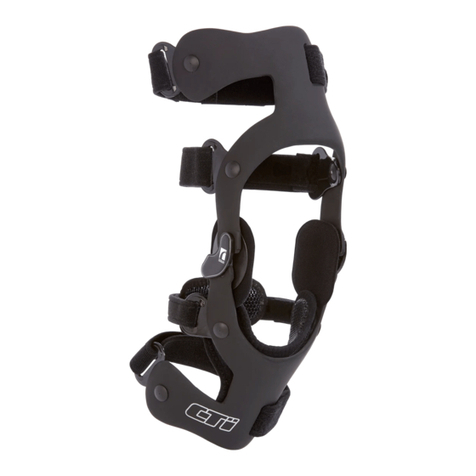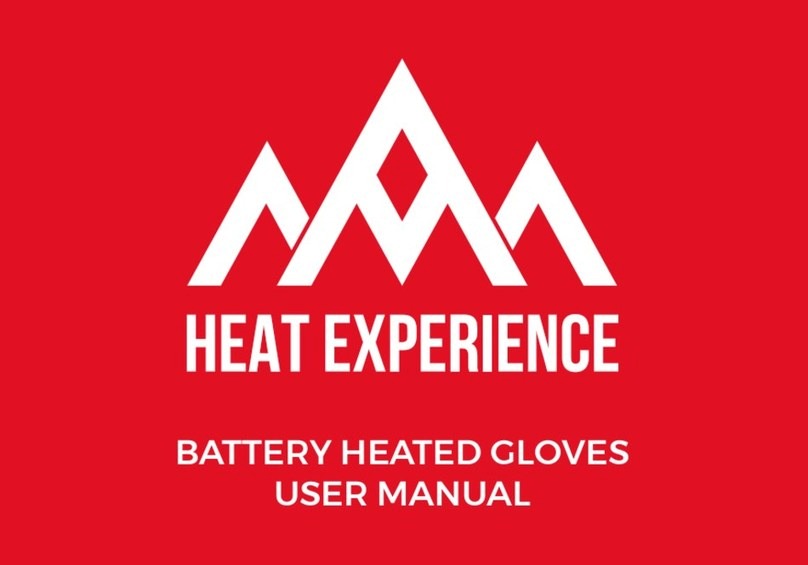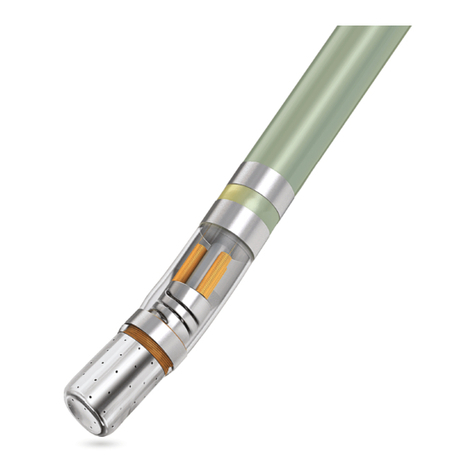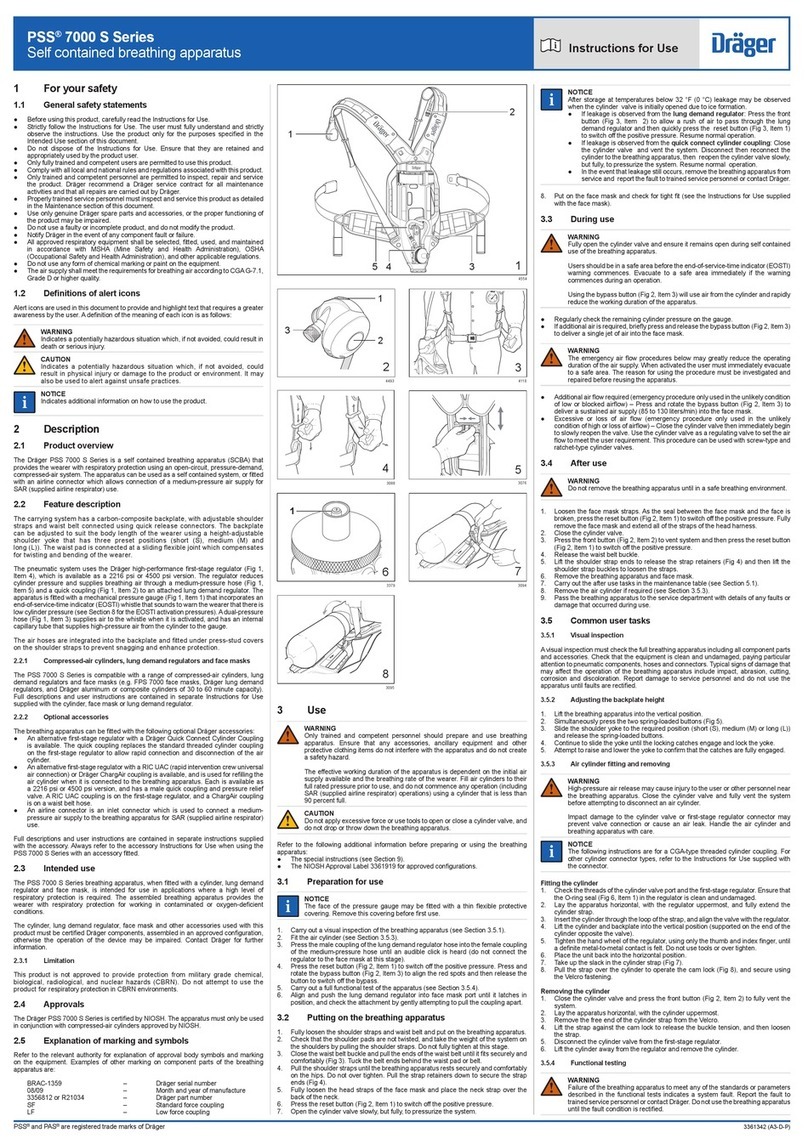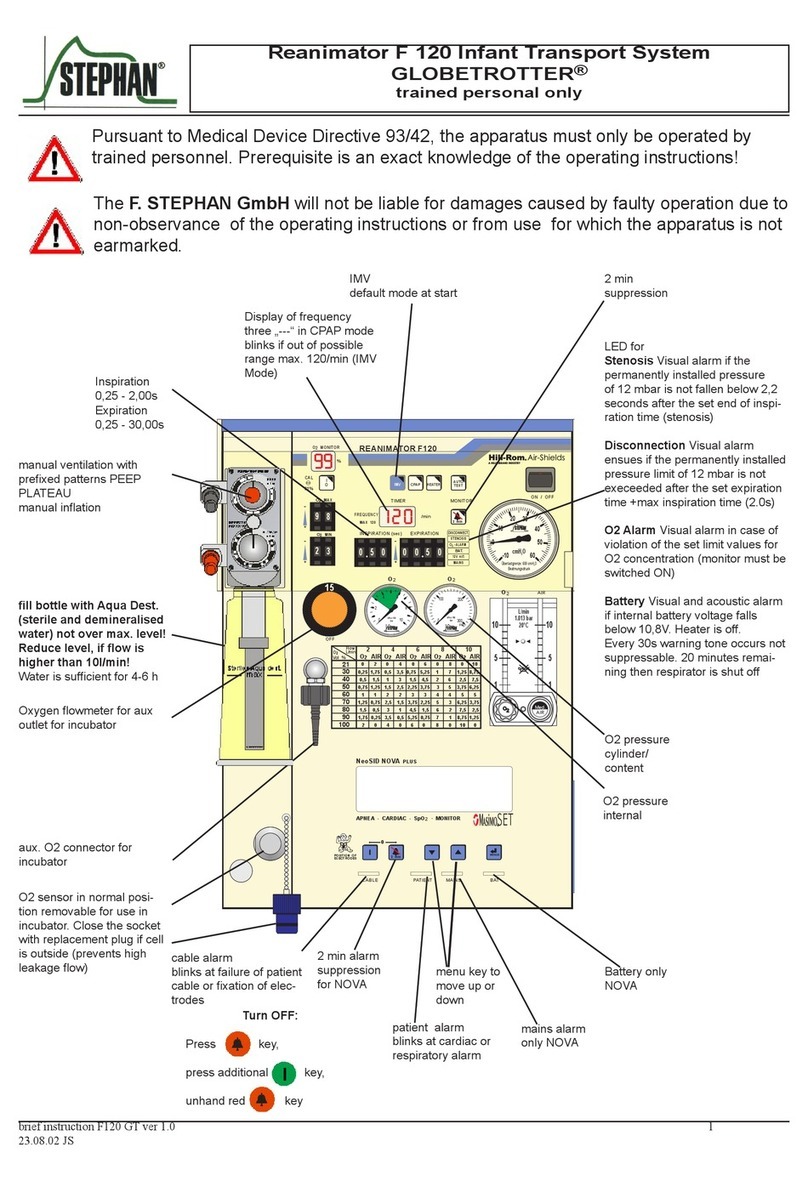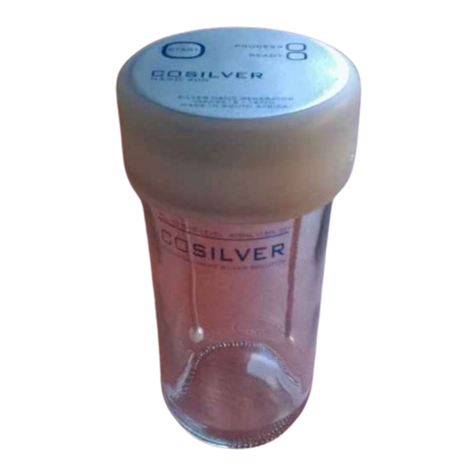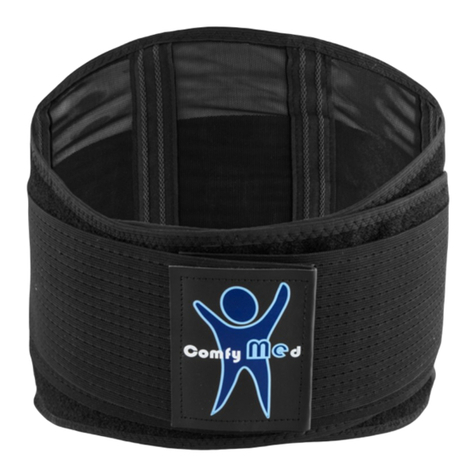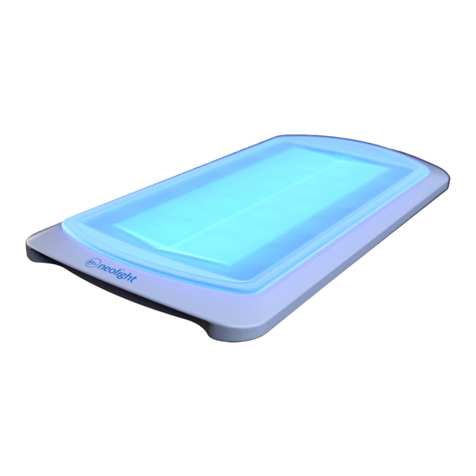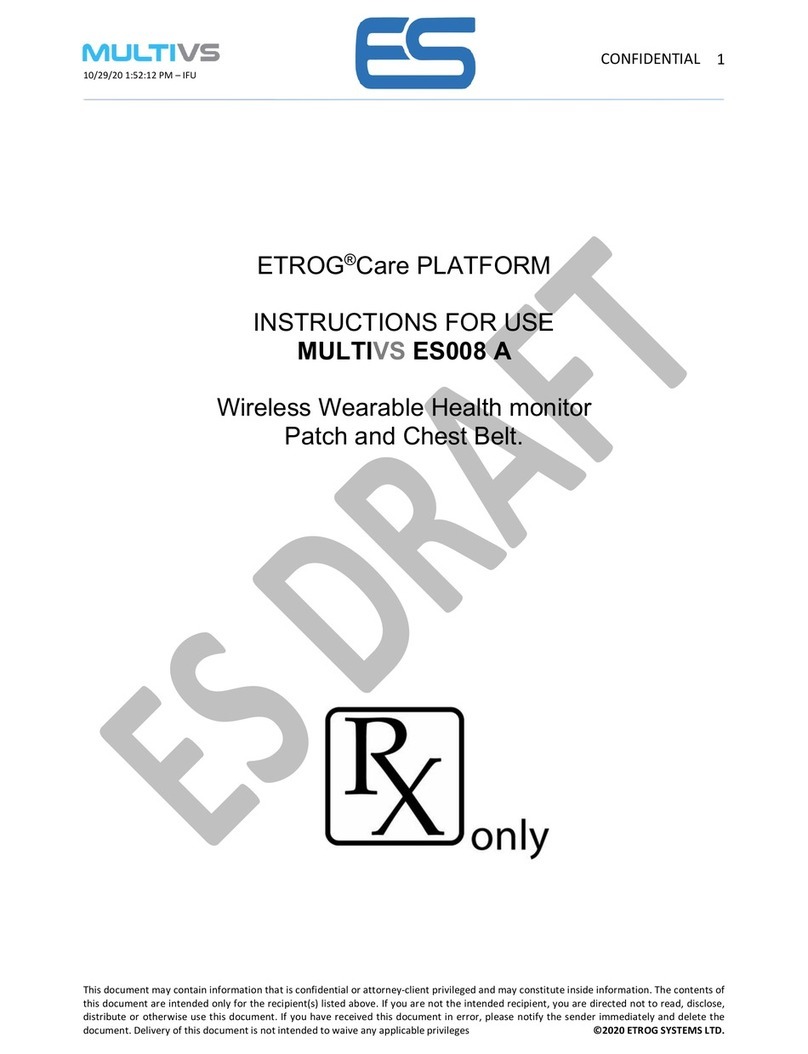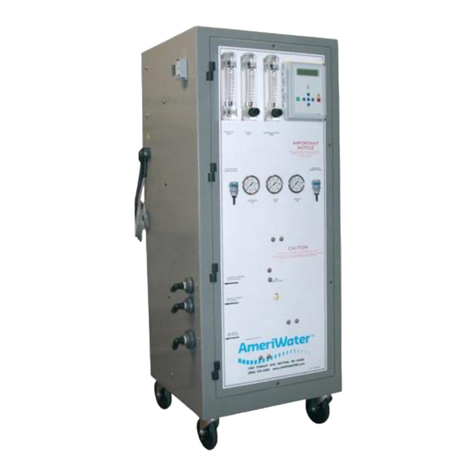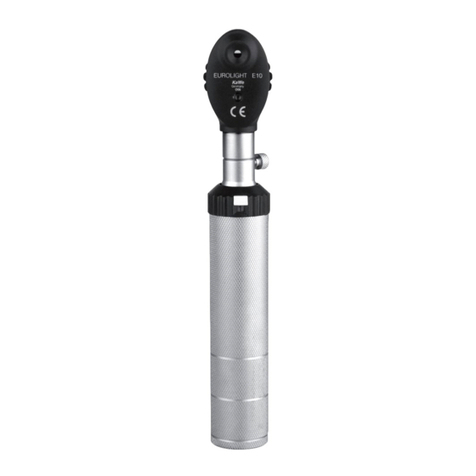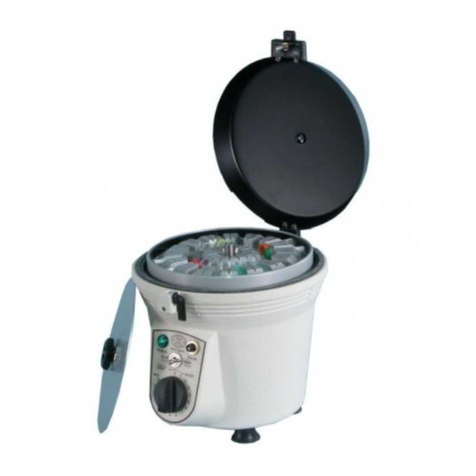
4Table of Contents
Doc. 006553 M-6
6.4.6 Lost Mains Alarm. . . . . . .... . . . . . . . .... . . . . . . .... . . . . . . . ... . . . . . . . .... . . . . .97
6.4.7 SpO2Disconnected (SpO2Sensor Failure/Disconnection
Alarm).....................................................................97
6.4.8 SpO2Signal Lost Alarm..................................................98
6.4.9 Poor SpO2Signal.........................................................98
6.4.10 FiO2Disconnected (FiO2Sensor Failure/Disconnection
Alarm).....................................................................99
6.4.11 Ambient Pressure Compensation Lost Alarm . . .. .. . . . . . .... . . . . . . . ... .99
6.4.12 Temperature Comp. Lost (Ambient Temperature Compensation
Lost Alarm) ............................................................. 100
6.4.13 Humidity Comp. Lost (Humidity Compensation Lost
Alarm)................................................................... 100
6.4.14 LED Failure Alarm.... . . . . . . . .. .. . . . . . ..... . . . . . . . .. . . . . . . . .... . . . . . . . .. 101
6.4.15 Low Alarm Battery Alarm .... . . . . . . . ... . . . . . . . .... . . . . . ..... . . . . . . . .... 101
6.4.16 Alarm Battery Error Alarm ... . . . . . . . .... . . . . . . . ... . . . . . . . .... . . . . . . . ... 101
6.4.17 Internal/Click-In Battery Hot Alarm .. .. .. .. ....... .. .. ........ .. .. .. ... 102
6.4.18 Heated Circuit Temp. Alarm ..... . . . . . . . ... . . . . . . . .... . . . . . . . ... . . . . . . . 102
6.4.19 High Humidifier Temp. Alarm . . . . . . .... . . . . . . . .... . . . . . ..... . . . . . . . .. . . 103
6.4.20 Humidifier Fault Alarm . . . . . . . ... . . . . . . . .... . . . . . . . ... . . . . . . . .. .. . . . . . .. 103
6.4.21 Heated Circuit Fault Alarm.. . . ... .. . . . . . .... . . . . . . . ... . . . . . . . .... . . . . . . 104
6.4.22 Internal Function Failure . .. . . . .. . . . . .. . . . . .. . . . .. . . . . .... . . . . . . . .. . . . .. 104
6.4.23 Air Temp. Sensor Fail Alarm . . ... . . . . . . . .... . . . . . . . ... . . . . . . . .... . . . . . . 105
6.4.24 Internal Error Alarm .. . . . . . . . .. .. . . . . . ..... . . . . . . . .. . . . . . . . .... . . . . . . . .. 105
6.4.25 Database Integrity Fail Alarm.. . . ... . . . . . . . .... . . . . . . . ... . . . . . . . .... . . . 105
6.4.26 Cooling Fan Error Alarm . . . . . . . . .... . . . . . . . ... . . . . . . . .. .. . . . . . ..... . . . . 106
6.4.27 Clock Failure Alarm .. . . . . . . . .. .. . . . . . ..... . . . . . . . .. .. . . . . . .... . . . . . . . .. 106
6.4.28 Internal Temp High Alarm. ... . . . . . . . .... . . . . . . . ... . . . . . . . .... . . . . . . . ... 106
6.4.29 Humidifier/Bypass Loose Alarm . . .. . . . . .. . . .. . . . . .. . . . .. . . . .. . . . .. . . . . 107
6.5 Alarm Test.......................................................................... 107
6.5.1 Alarm Signal Test... .. . . . . . .... . . . . . . . ... .. . . . . . .... . . . . . . . ... . . . . . . . ... 107
6.5.2 Mandatory Alarm Tests . . . . . .... . . . . . . . .... . . . . . . .... . . . . . . . .. . . . . . . . .. 107
6.5.3 Optional Alarm Tests . . . . .. .. .. .. .. . .. .. .. .. .. .. .. .. .. .. .. . .. .. .. .. . .. .. 109
7 Cleaning and Maintenance . . . . . .... . . . . . . . ... . . . . . . . .... . . . . . . . ... . . . . . . . .. .. . . . . . ..... . . . . .111
7.1 Cleaning the Nippy 4 .. . . . . . . . ..... . . . . . . ... . . . . . . . .... . . . . . . . ... . . . . . . . .... . . . . . . .111
7.1.1 Main Unit ................................................................111
7.1.2 Air Pathway Disinfection . . . . . . .. . . . .. . . .. . . .. . . .. . . .. . . .. . .. . . .. . . . .. . . 112
7.1.3 Patient Circuit. . . ... . . . . . . . .... . . . . . . . ... . . . . . . . .... . . . . . ..... . . . . . . . .. .. 112
7.2 Cleaning and Replacing the Filters . . . . . . ... .. . . . . . .... . . . . . . . ... . . . . . . . .... . . . . . . 112
7.2.1 Washing a coarse filter.. . . . . . . ... .. . . . . . .... . . . . . . . ... . . . . . . . .... . . . . . . 113
7.3 Change of Patients ... . . . . . . . .. .. . . . . . .... . . . . . . . ... .. . . . . . .... . . . . . . . ... . . . . . . . ... 114
7.4 Regular Maintenance . . . . .... . . . . . . . .... . . . . . . .... . . . . . . . .... . . . . . ..... . . . . . . . .. . . 114
7.5 Service and Repair .... . . . . . . .... . . . . . . . .. . . . . . . . ..... . . . . . . . .. . . . . . . . .... . . . . . . ... 114



















